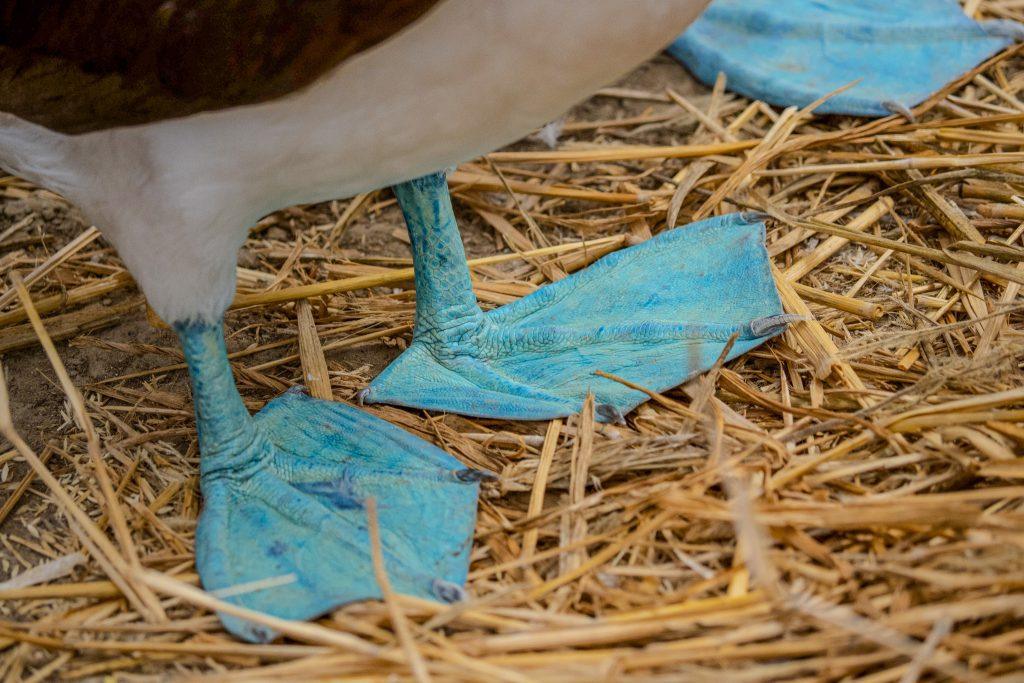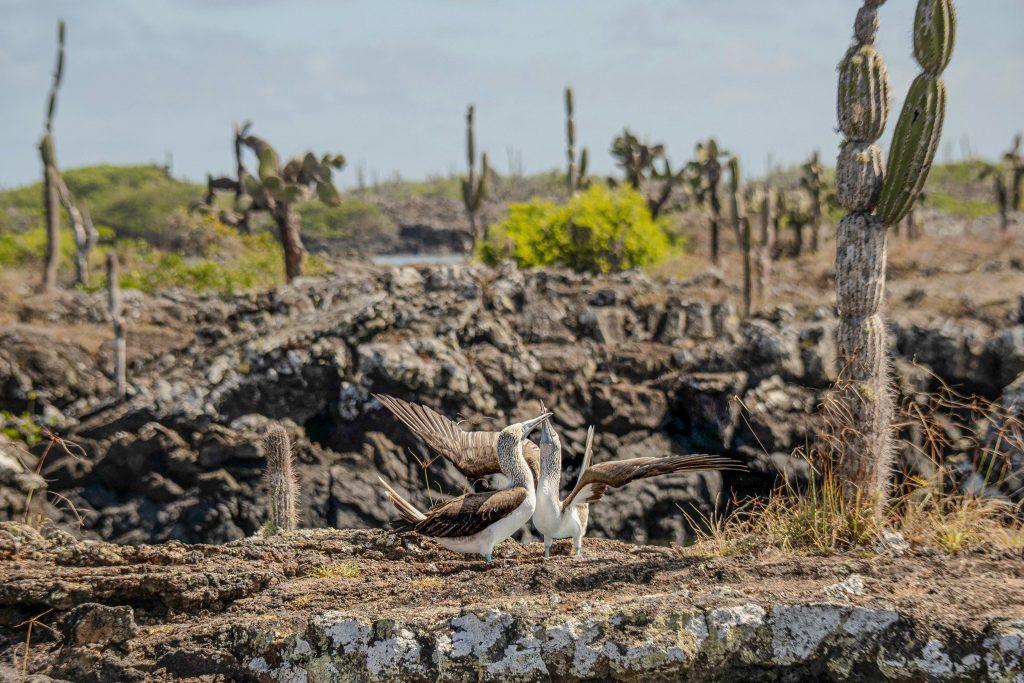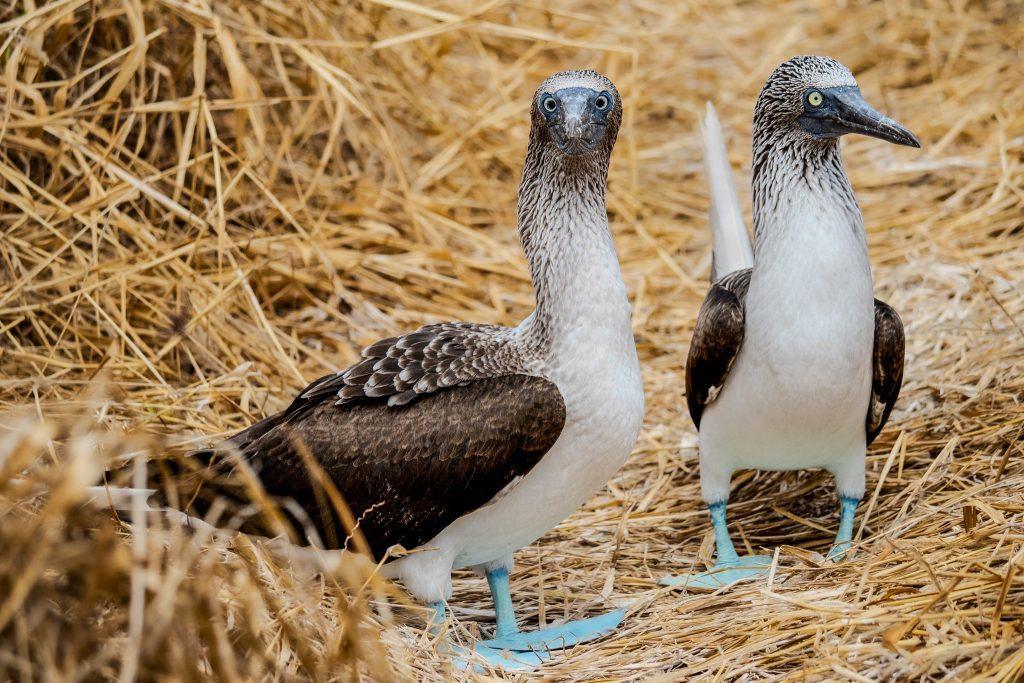Spectacular and mysterious, the blue-footed booby of the Galápagos captivates naturalists, biologists, and photographers around the world. Its vivid blue feet, precise courtship dance, and strong marine instinct make it a true emblem of tropical ecosystems. Indeed, its behavior and ecological role reveal the scientific beauty hidden behind every movement.
Article by Damien Lafon, photographs by Svetlana Markoff.

The Blue-footed Booby of the Galápagos: The Science Behind the Brilliant Blue
The blue feet of the Galápagos booby have long fascinated researchers. This pigment comes from carotenoids obtained by eating oily fish such as sardines and anchovies. It acts as an indicator of vitality: the brighter the color, the healthier the individual. During courtship, males lift their feet rhythmically to attract females. This blue tone becomes a visual language, a sign of physiological balance and a reflection of diet quality.
Habitat and Distribution of the Blue-footed Booby
The species inhabits the tropical Pacific coast, from Peru to Mexico, but reaches its greatest density in the Galápagos Islands. These volcanic lands, swept by cold nutrient-rich currents, provide ideal breeding conditions. The boobies nest on bare rocks or sandy beaches, without building a nest, and fiercely defend their territory. The breeding season, from June to August, turns the coasts into a lively stage filled with cries, dances, and acrobatic flights.
The Hunting Prowess of the Blue-footed Booby
A true marine athlete, the Galápagos booby dives from heights of up to 90 km/h. It closes its nostrils before impact and uses subcutaneous air sacs to cushion the plunge. Its sharp, spear-like beak pierces the water’s surface with striking precision. These birds often hunt in groups, coordinating their dives in spectacular collective strategies. Their diet consists mainly of sardines, mackerel, and anchovies, ensuring an essential ecological balance between surface and depth.
Did you know?
About half of the world’s population, nearly 20,000 breeding pairs, nests exclusively in the Galápagos archipelago.

Dance, Reproduction, and Parental Strategies
The courtship ritual of the Galápagos blue-footed booby is among the most iconic in the animal kingdom. The male alternately lifts his blue feet, spreads his wings, points his beak skyward, and whistles softly. If the female accepts, she mirrors his gestures in near-perfect synchronization. After laying two or three eggs, both parents alternate incubation, using their feet to regulate the temperature unique behavior among seabirds. However, sibling rivalry can be fierce: the eldest chick may eliminate the weakest when food is scarce, a natural selection phenomenon typical of isolated ecosystems.
Threats Facing the Blue-footed Booby
Although listed as “Least Concern” by the IUCN, the Galápagos blue-footed booby faces several ecological pressures. The decline of fish stocks due to overfishing and warming waters reduces breeding success. Increasing tourism, invasive species, and plastic pollution also threaten nesting sites. Monitoring programs led by the Charles Darwin Foundation and the Galápagos National Park aim to stabilize populations and protect key marine feeding zones.
An Ecological and Photographic Symbol of the Galápagos
More than a seabird, the Galápagos blue-footed booby has become an ecological icon. For scientists, it serves as a biological indicator; for photographers like Svetlana Markoff, it represents the perfect fusion of natural grace and environmental message. Its luminous parades, synchronized flights, and social interactions tell a story where science meets poetry. Protecting it means preserving the fragile harmony between ocean, light, and life.
Did you know?
A decrease in the intensity of foot coloration often signals nutritional stress even before breeding numbers drop.

The Lesson of the Blue-footed Booby
A symbol of adaptation and balance, the Galápagos blue-footed booby illustrates life’s creativity in the face of isolation and change. Its beauty, biological precision, and dependence on ocean health remind us of the urgent need to safeguard these unique ecosystems. For both scientists and artists, this bird remains a guide a messenger of a world where color, form, and movement express the intelligence of nature.
Follow us on Instagram and Facebook to stay informed and support our media via www.helloasso.com
This article may interest you: Why Do Toucans Have Such a Large Beak?
